Mag. Andrej Brešan received his Master's degree from the Faculty of Mathematics and Physics at the University of Ljubljana, with a thesis focusing on temporal analysis of solar flares in different radio and X-ray frequency bands. Since his high school days, he has been a member of the astronomical society Fara ob Soči from nearby Italy, where he is involved in efforts to popularize science. He works as a teacher of physics at cross-border secondary schools, in Gorizia, Italy. He organises astronomy evenings and public telescope viewings in his home town. He is also involved in amateur culture and supports creative activities for youth.
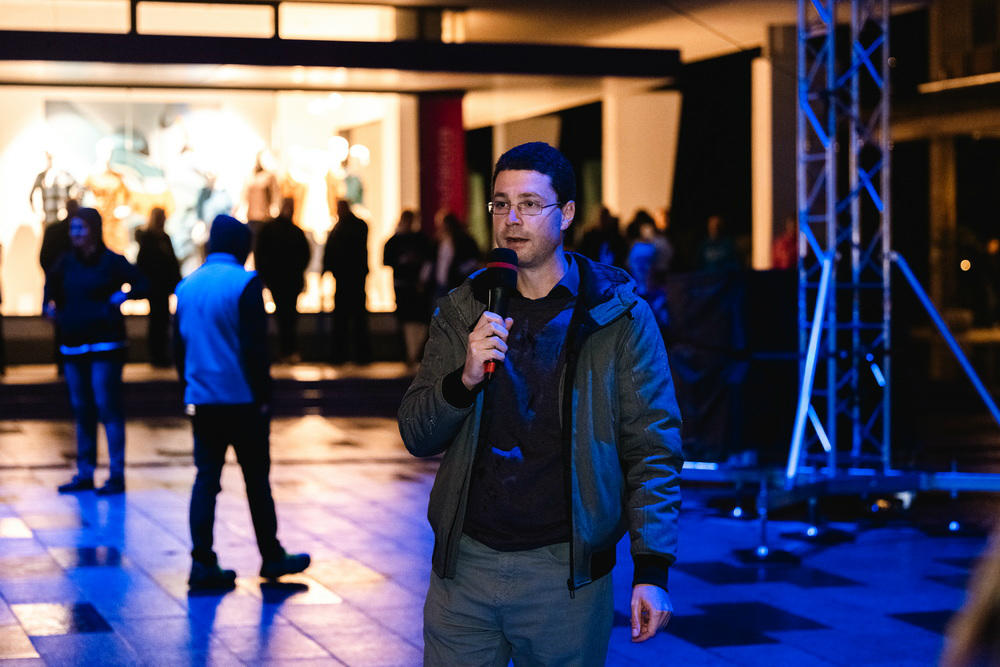
sound/light/movement immersive interactive installation
Laser Harp Q is an Interactive Immersive Sound / Light Installation; a participatory musical instrument comprised by four frames (2mts wide x 2mts high) disposed shaping a three dimensional cube, each frame with 12 lasers beams vertically arranged. Interrupting these laser beams with any part of the body, provokes a sound to be triggered and an array of Leds to be turned on. Each frame comprises an instrument itself with its own set of sound, while each four frames are tuned under the same tonality. This way, the audience is invited to take part of the experience by playing one of these frames alone or together with other participants who can play the other frames. Laser Ha Laser Harp Q is an unusual electronic instrument that encourages participation & collaboration to achieve the best results. We get closer to other people in order to create together; create while having fun.
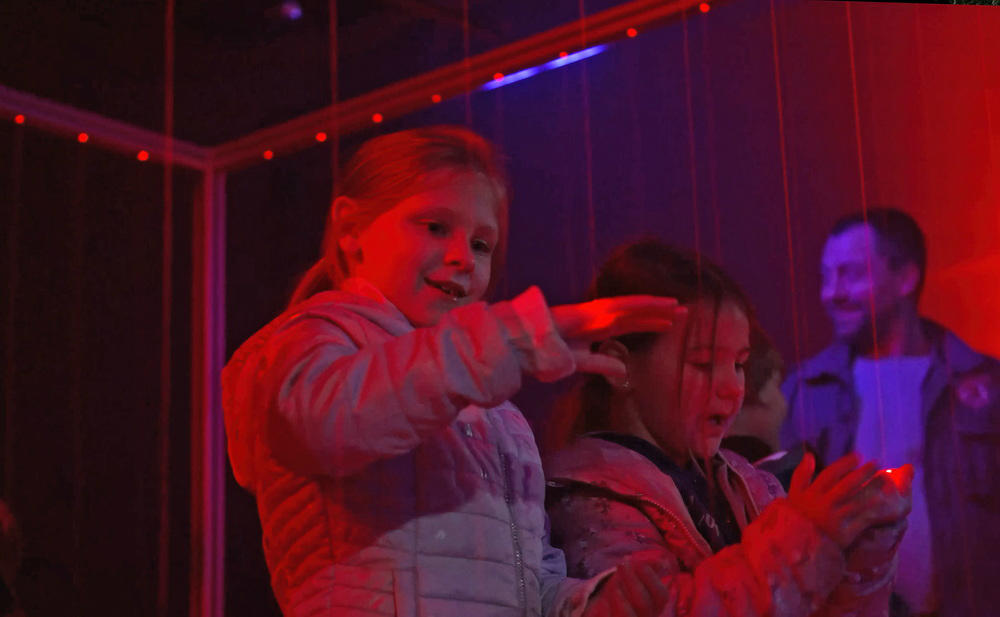
sculpture
The sculpture "Nautilus" symbolizes sacred geometry, as well as the Fibonacci sequence, in connection with the golden spiral of life and the golden ratio. This powerful geometry is underlined by a play of colors, which illustrates the diversity of life and the splendor of the colors found on nature. Nautilus is a 170 cm high, 60 cm wide and 45 kg heavy steel struts / epoxy resin sculpture, covered with light-resistant white lacquer, colorfully illuminated by the light programming.
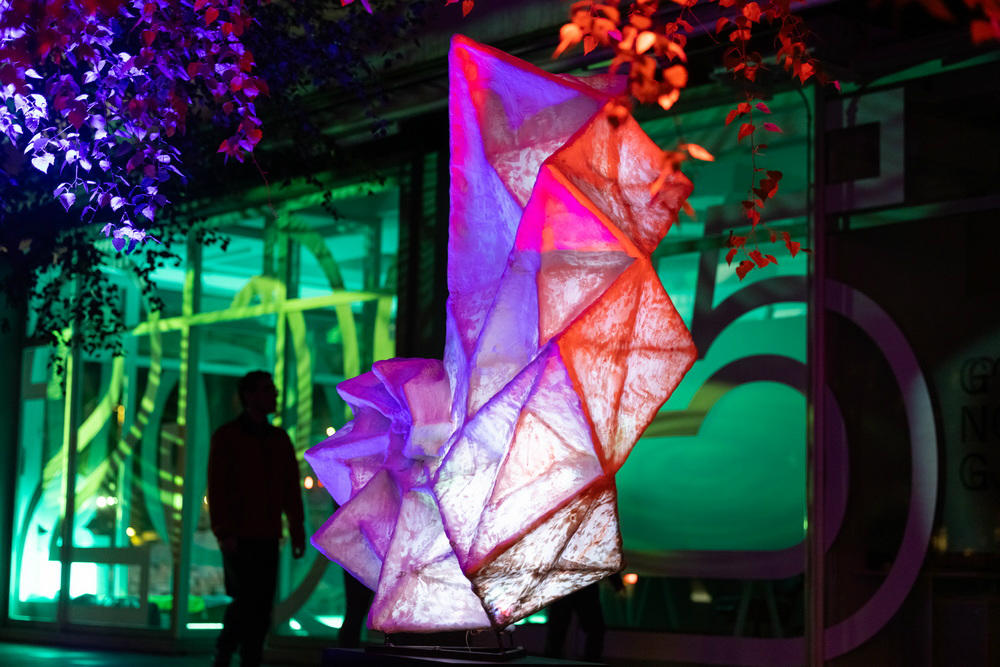
Circus Lumineszenz – Leonardo Bettinelli
Leonardo Bettinelli began his musical studies at the 'Musical Composition with Electro‐acoustic Media' course at Quilmes National University. During this time he became involved with audiovisual media mainly through theatre and then working on different multimedia projects, such as shorts, installations, dance, advertising, etc. In parallel, he developed his activity as a sound technician, whether it be live, in the studio, carrying out jobs involving music production, recording, mixing and sound post production. At present, he is also a performer / improviser / composer in the field of experimental, contemporary and electro‐acoustic music, as well as in several popular music projects where he incorporates elements of the aforementioned currents. Since 2006 he works actively on the diffusion of experimental music and free improvisation, organising different music cycles in Argentina and Europe. Nowadays he directs the European branch of Niños Consentidos Festival. In 2012, he started a new exploration in the fields of multimedia & interactive art, and founded in Austria the project Circus Lumineszenz. Since 2018 the Light Festival "Blockheide Leuchtet" is produced under his direction and execution, together with the project “Lichtspektakel Sparbach”, which promote Light Art in natural spaces.
Circus Lumineszenz is an artistic & educational project based in Austria where, through the use of light & creative technology, we develop multimedia environments, installations, performances and objects where the audience is invited not only to contemplate and enjoy, but in most cases, to actively participate as creators of the experience as well.
The following is an uncomplete list of institution with which he collaborated: Albertina Museum Wien, Ars Electronica Linz, WienXtra, Österreichisches Kulturforum Zagreb / London / Kairo / Rom / Belgrad
/ Laibach / Bucharest, Österreichische Bötschaft Helsinki / Lisbon / Kopenhagen / Buenos Aires, Bundesministerium für Bildung und Frauen, Bundeskanzleramt Kunst und Kultur, Land Niederösterreich, Stadt Wien, Otto Mauer Fonds, WienXtra, Kultur Kontakt // OEAD, Albertina Museum, Ars Electronica Center, Ars Electronica Festival und viele andere.
Projects abroad until now in England, Denmark, Finland, USA, Croatia, Hungary, Serbia, Switzerland, Spain, Slovenia, Greece, Egypt, Argentina, Czech Republic, Belgium, Portugal, Iceland, Netherlands, Macedonia, Romania, Lithuania and Germany.
References Circus Lumineszenz: http://www.circuslumineszenz.com/references.html
Blockheide Leuchtet Festival: http://www.blockheide‐leuchtet.at/
Niños Consentidos Festival: http://www.ninosconsentidos.eu/
Dr. Andreja Gomboc is a tenured professor of Astronomy at the University of Nova Gorica’s Faculty of Natural Sciences, and a researcher at the Center for Astrophysics and Cosmology. She studies tidal disruptions of stars approaching black holes, gamma-ray bursts and gravitational wave events. She is a member of several international collaborations (Vera Rubin Observatory LSST, ENGRAVE, Gaia), as well as a recipient of the Zois Award, organizer of Slovenia’s first International Astronomical Union Symposium and the exhibition From the Earth to the Universe in Ljubljana’s Tivoli Park, and the editor of the online portal Portal v vesolje (Portal to the Universe). She has been a regular columnist for the newspaper Delo since 2018.
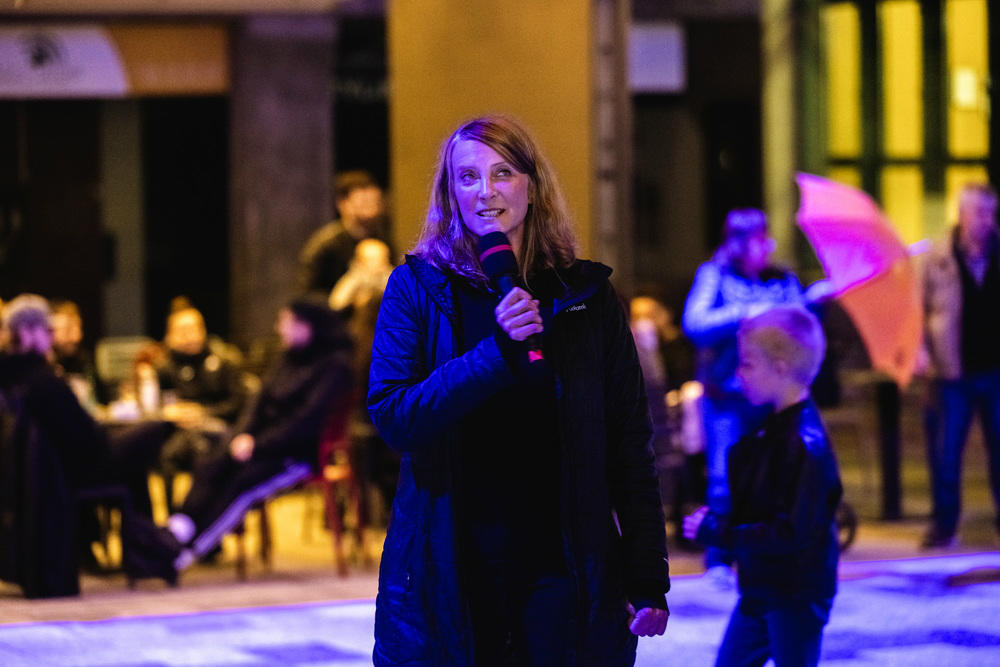
Light installation, 2023
Venus once had an atmosphere similar to that of Earth, but over time it underwent dramatic transformations and became an inhospitable environment. The project Alchemy of Atmospheres focuses on the transformative power of natural processes and on the potential for evolution and changes that may one day befall our planet. It aims to show the abstract and ephemeral power of changes in the atmosphere, emphasize the changeability of even the most stable natural phenomena and encourage visitors to think about the possibility that our atmosphere will one day experience similar transformations as Venus.
In this transfer of Venus’ atmosphere to Earth, some abstract changes have taken place, allowing the viewers to discover different levels of space exploration and technologies in the installation. The project thus encourages reflection on the mysteries of the universe and offers the viewer a new perspective on its dimensions. /J. Grošelj/
Janez Grošelj holds a master’s degree in architecture, but is increasingly moving away from building design and discovering his vocation in the smaller and more intimate field of art and lighting art. The encouragement for independent activity in this field came from his participation in the student Lighting Guerrilla project, Park Geometrics, in 2015, and, since then, he has mostly been creating under the auspices of the festival. He has participated in several festivals in Slovenia and abroad with his installations, and, in addition to his creative activity, he also shares his knowledge and experiences a a mentor in workshops.
co-production: Svetlobna gverila

a series of light installations
Cosmic views — artistic reflections of human’s eternal fascination with the stars and celestial bodies. Beneath the shade of various trees, light installations, woven from the harmony of contemporary art and scientific wisdom, bring the wonders of the universe closer to the human’s personal level.
At a time when humans are increasingly aware of their weight in the natural cycle - and this knowledge brings with it the burden of responsibility - a look into the vast universe offers solace. The unfathomable remoteness of celestial bodies inspires with an untouchable peace, while the monumental might of cosmic processes offer inspiration and courage.
Comissioned by Turizem Ljubljana for LUV festival.

Description of installations:
Persistence of Fervor
The installation representing the Red Dwarf Star stands as a poignant artistic interpretation. Unlike its more luminous cosmic counterparts, the Red Dwarf embodies the quieter, steadier aspect of the universe, mirroring the often-overlooked yet enduring forces in our lives.
This installation evokes a deep sense of introspection and resilience, reflecting the Red Dwarf’s long-lasting, unwavering burn that outlasts the brighter stars. It challenges viewers to find beauty in constancy and to appreciate the less dramatic, yet fundamental, elements of existence. Amidst the broader context of the “Cosmic views” series, which reflects on humanity's relationship with the cosmos, the Red Dwarf installation offers a contemplative counterpoint, inviting feelings of grounding and a reassurance of the persistent yet subtle strength within the cycles of nature and human emotion.
Fleeting traces
The installation simulates the dazzling spectacle of a meteor shower, where streaks of light dash across the darkened sky, each flare evoking a sense of fleeting wonder and the thrill of witnessing a rare astronomical event, reminding viewers of the ephemeral beauty that punctuates the vastness of space.
This artistic interpretation invites onlookers to ponder the transitory nature of life and the beauty of momentary phenomena. Amidst the broader context of the “Cosmic views” series, which reflects on humanity's relationship with the cosmos, the Fleeting Traces installation offers a poignant metaphor for the bursts of brilliance and creativity that characterize human existence against the backdrop of a vast, enduring universe. It instills a sense of humility, coupled with awe and an invigorating rush of adrenaline, inspiring courage to embrace the fleeting moments with passion and appreciation.
Star bursts
The Star Bursts installation captures the dynamic and awe-inspiring process of new star formation. This light installation embodies the explosive energy and brilliant inception of stars, reflecting the universe’s perpetual creation and renewal.
Emulating the energetic flashes of star births connect the observer to the celestial drama that unfolds across the galaxy, these bursts of light contrast sharply with the darkness, symbolizing hope, creation, and the infinite potential of the universe.
Amidst the broader context of the “Cosmic views” series, which reflects on humanity's relationship with the cosmos, this piece serves as a poignant reminder of the ongoing cycles of creation that define our universe. It challenges viewers to consider the bursts of creation in their lives, offering uplifting thoughts about the endless possibilities of creation.
Asteroidal Dichotomy
The "Asteroidal Dichotomy" captures the complex nature of asteroids as both harbingers of destruction and bearers of unimaginable wealth. This artwork explores the paradoxical roles that asteroids play in the cosmos.
The installation juxtaposes the violent impact asteroids can have on planets with their role as carriers of precious metals that could potentially enrich civilizations. It uses contrasting materials to dramatize the ominous destructive event against the slow, glittering allure of precious metals.
This duality evokes a spectrum of emotions: awe at the power of these celestial objects, fear of their destructive potential, and wonder at their valuable contributions. It prompts reflection on the delicate balance of destruction and creation in the universe, encouraging a deeper appreciation of how cosmic events can influence not only the physical world but also the economic and existential aspects of human life.
"Asteroidal Dichotomy" serves as a metaphor for the broader human experience, where great risks often accompany great opportunities. Amidst the broader context of the “Cosmic views” series, which reflects on humanity's relationship with the cosmos, this installation highlights the duality of vulnerability and fortune in the face of cosmic forces.
Celestial Gathering
The installation showcases the celestial phenomenon of stars bound together by gravity and forming clusters, drawing parallels to the interconnectedness seen in relationships and communities. This artistic representation highlights the collective beauty of star clusters, where each star contributes to the whole with its unique light and energy, combining together to create something far greater than the sum of its parts. This dynamic interplay of light mirrors the way relationships and community ties strengthen and enhance the human experience.
Amidst the broader context of the “Cosmic views” series, which reflects on humanity's relationship with the cosmos, the Celestial Gathering installation represents a hopeful reminder of our collective potential and the importance of every individual contribution.
Nothing captures the essence of the blending of different influences, contexts, energies and worlds of ideas better than transitional, border areas. There, it is difficult to pinpoint, or ever truly define, where one thing ends and the other begins. In this sense, with some metaphor and humor, one might refer to border as the geographical equivalent of art, which by definition is a field of ontological (and other) flexibility, always open to new incursions and contaminations. Both concepts are characterized by the fluidity of identities and determinations, which they do not take as a weakness, but rather an advantage that constitutively defines them. What could better capture this spirit of openness than a festival held at a geographic threshold, dedicated to practices that belong to art, science and technology at the same time, but at the same time they never truly belong to any one of these in particular. Between the rural and the urban, between two countries, regions and disciplines, the R.o.R. festival showcases artistic practices in the intervening space between disciplines, which allows them to speak in many languages and thus address a diverse range of communities.
The practice of the Hungarian art collective Lightspray Visual (Fényszóró Visual), who have been creating projects using analogue light for over 15 years, also forms part of this universe of (artistic) hybridities. The collective’s origins date back to 2008, when they joined a cultural association which was creating art projects, music events and exhibitions in the local community. The association was mostly made up of self-taught artists who thought and acted both collectively and individually. It seems that this initial experience was pivotal for the work of the collective, which found in it the freedom to develop its work and gather life and professional experience through interactions with friends. And it is this spirit of openness to new contaminations achieved through contacts with new people and environments that still defines the work of Lightspray Visual to this day.
This formative experience of the collective has also defined the technological specifications of their work. They use old overhead projectors with powerful light bulbs to project color images onto building surfaces and monuments. They achieve motion of their images through use of special devices they created themselves, which can be mounted on an overhead projector, creating an effect which resembles kinetic sculptures of grandiose proportions. In fact, these imposing creations combine the principles of the three classical media in their transmedia tandem: their point of departure, as we will see below, is tied to photography; the logic of image creation and its effect are often explicitly pictorial in nature, while the very technological element that makes this possible is constitutively integrated into the work itself, its experience, in a certain spirit of installation. This experimental hybrid approach can be linked to their formative period in a cultural community, where artistic solutions were inspired by bonds of friendship. In the cultural association, the duo gained their formative experience working with colleagues – professional photographers who developed their photographs as slides and then projected them onto the canvas using a slide projector. From this, Lightspray began to develop their reception, which initially involved painting on glass panels of a similar size and creating slide projections with them, which is likely the reason for the undeniably painterly dimension of the collective's work. After these initial experiments with slide projectors, they soon began using overhead projectors, which are so characteristic of their artistic practices today. This move was driven on the one hand by the fact that they overhead projectors allow for larger “painting” surfaces and are easier to use, and on the other hand they allow for the option of changing the light source for one more suitable for large area projection. This allowed them to achieve a four-fold increase of the original luminosity, and after further experimentation, they were able to increase their luminosity to sixteen times the factory default!
The playful, simple and direct productivity of the medium itself continued to inspire technical solutions that give the Lightspray visual duo’s works their characteristic sense of slightly theatrical analogue expressivity. Since the overhead projector incorporates into its projection every element that finds itself in the path of its light strip, they came up with the idea of creating miniature robotic devices that will set the entire projection in motion. They were first guided by the image of the rotating cobwebs effect, which was only the beginning of the characteristic hypnotic visuals of their ecstatically charged projections. Their magical and exhilarating play, always engaged in dynamic transformation, most often draws on the motifs inspired by the immediate context, a sort of genius loci, be it a historical fact, a natural landmark, a fragment of the environment, or the immediacy of the material surface that “receives” their projections. All this can find itself as a motif at the center of the duo's interest and continue its journey to the point where it betrays its starting point (as is ever the rule in art) and continues its motion, assembling and disassembling in breathtaking, ecstatic transformations.
Nevertheless, their work is undeniably influenced by street art, steampunk and science fiction. I think it is no coincidence that these influences are cross-polinating, transforming in joyful hybridity. They are often defined by a sense of anachronism, or more precisely retrofuturism, which is itself a contradiction in terms, but this contradictory temporality is something that essentially defines the conceptual landscape of the Lightspray Visual duo. Their work combines different media and disciplines, and above all harnesses the power of imagination and old and new technologies to show the forces which can change the world we live in. Historical fragments in futuristic scenarios, robotic mechanical structures in organic free-flow, today’s technology reimagined in a genuinely analog story: all these fragments of contradictions act as tactical particles in the work of the duo, able to penetrate through the horizon of the expected and into the realms of the impossible, yet somehow possible. Is it a paradox? The Lightspray visual duo’s visual narratives of are just that, synesthetic compositions that follow their own logic and write scenarios that only art is capable of doing.
Vladimir Vidmar

Lightspray Visual (Fényszóró Visual) an artist group from Hungary, has been working with analogue light for more than 15 years. Their main activity is based on old overhead projectors, in which they installed high-brightness bulbs to colour buildings or monumental surfaces.
The paintings are moved by self-made repetitive motion devices which, when placed on the projector, can achieve an effect similar to kinetic sculpture, but on a huge scale. This makes not only the projected image, but also the projector is an exciting installation.
The artist group is strongly influenced by contemporary street art, steampunk and sci-fi, but their greatest potential is the ability to incorporate any subject to fit the location and the theme of the festivals. Currently, their projects have many directions; they can highlight building facades like video mapping, fuse light from multiple projectors to create analogue effects, and thanks to the latest development, they can create analogue-digital hybrid light shows synchronised to music.
In recent years they presented their art at numerous festivals such as Nobel Week Lights in Sweden, Prisma in Portugal, Essen Light Fest in Germany and in Lumiart in Dubrovnik.
installation
Mars is a touring artwork by UK artistLuke Jerram
Measuring seven metres in diameter, the artwork features 120dpi detailed NASA imagery* of the
Martian surface. At an approximate scale of 1:1 million, each centimetre of the internally lit spherical sculpture represents 10 kilometres of the surface of Mars.
The artwork allows us to view Mars from the air, as though we are a satellite mapping and studying the surface in perfect detail. Every valley, crater, volcano and mountain is laid bare for us to inspect. We are transport ed to this desert wasteland, to imagine what it’s like to step foot on this incredible planet.
“Mars follows on from my other touring astronomical artworks Museum of the Moon and Gaia, and allows a close encounter with the Martian planet. I hope that visitors will feel transported to its inhospitable desert wasteland and in comparison, really value our life on Earth.” Luke Jerram
Over its lifetime, Mars will be presented in a number of different ways both indoors and outdoors, so altering the experience and interpretation of the artwork. The installation is a fusion of Mars imagery, light and surround sound composition created by BAFTA and Ivor Novello award winning composer Dan Jones.
*The Mars artwork is made from NASA Mars Reconnaissance Orbiter data
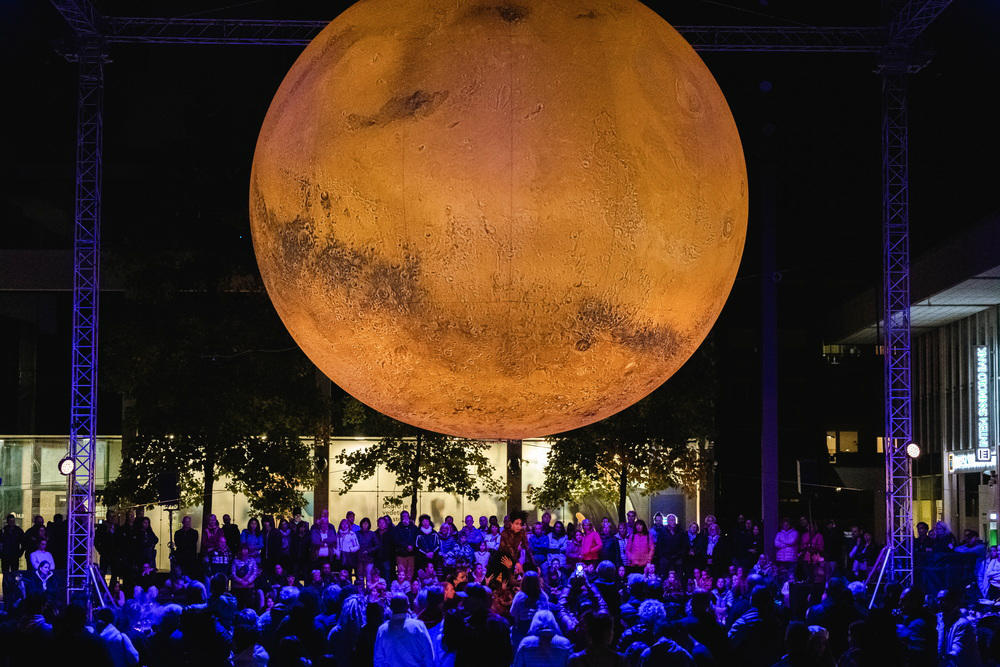
Luke Jerram’s multidisciplinary practice involves the creation of sculptures, installations and live arts projects. Living in the UK but working internationally since 1997, Jerram has created a number of extraordinary art projects which have excited and inspired people around the world. In 2022 alone he had 104 exhibitions in 25 different countries, visited by more than 2 million people.
As well as touring his installations, Luke’s artworks are in over 50 permanent collections around the world including the Metropolitan Museum of Art in New York and the Wellcome Collection in London.
Luke Jerram was given honorary doctorates from the University of Bristol in 2020 and University of Gloucestershire in 2022. He was made an Honorary Academician of the RWA and Fellow of The Royal Astronomical Society in 2020.
In 2019 he set up and funded both the Dreamtime Fellowship to support recent graduates in his home city of Bristol and the Bristol Schools Arts Fund to support secondary schools impacted by austerity.
Light installation, 2024
Light as a means of artistic expression focuses on its transformative power and its ability to transform space and perception. Through abstract and transcendental projections, the work aims to highlight the mutability and transience of visual perception, encouraging visitors to consider how light can shape our experiences and feelings.
It plays a major role in creating dynamic scenes that allow visitors to explore artistic expression on multiple levels. It creates abstract visual narratives, leading the viewer through a series of emotions and reflections, while fluid patterns and warm tones create an atmosphere that is both enchanting and introspective.
This invites one to reflect on the importance of light and perception and how they shape our reality, and opens up a new perspective on the potential locked away in the interplay of light, color and space. With this installation, Lumenartist invites visitors to explore magical light projections and experience their transformative potential.
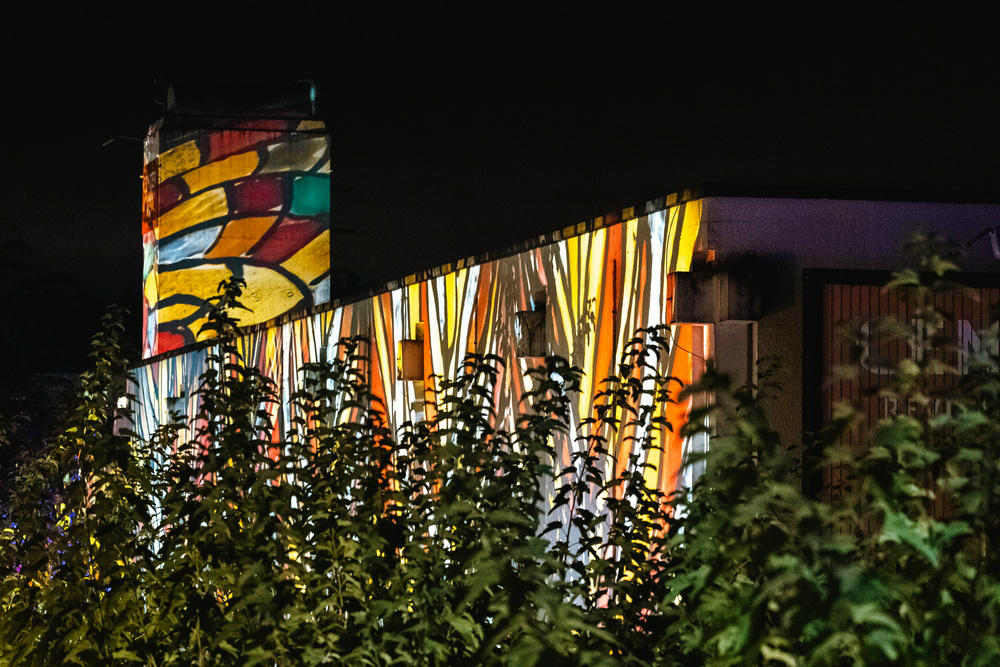
LuMenArtist
LuMenArtist has been actively creating since 2011. So far, his visual decorations have fascinated festival-goers at festivals such as the Lost Theory Festival, the Ozora Festival, the S.U.N. Festival, the Electron Festival, the Garden Festival, the Terraneo Festival, the EMAC Festival, Dimensions and the Outlook Festival. With an impressive arsenal of more than 120 projectors, they can showcase their projections on a variety of surfaces, covering a surface area of 4,000 m2 in total. They are guided by the following motto: “Art is our life and life is our art”.
Interactive light performance, 2018
Colours in Motion is an interactive light-musical project that enables the audience to create their peculiar sound and visual environments in a playful way by means of different sensors and controllers. This kind of interactivity represents both an artistic and technological challenge since the idea is for the audience to be able to affect the moving visual images and contribute to the electronic sound landscape in real time. The project thus encourages the audience to make the qualitative step forward from a passive recipient, who only listens and watches, into an active contributor – not only in art, but in their lives and society in general.« /Marko Batista/
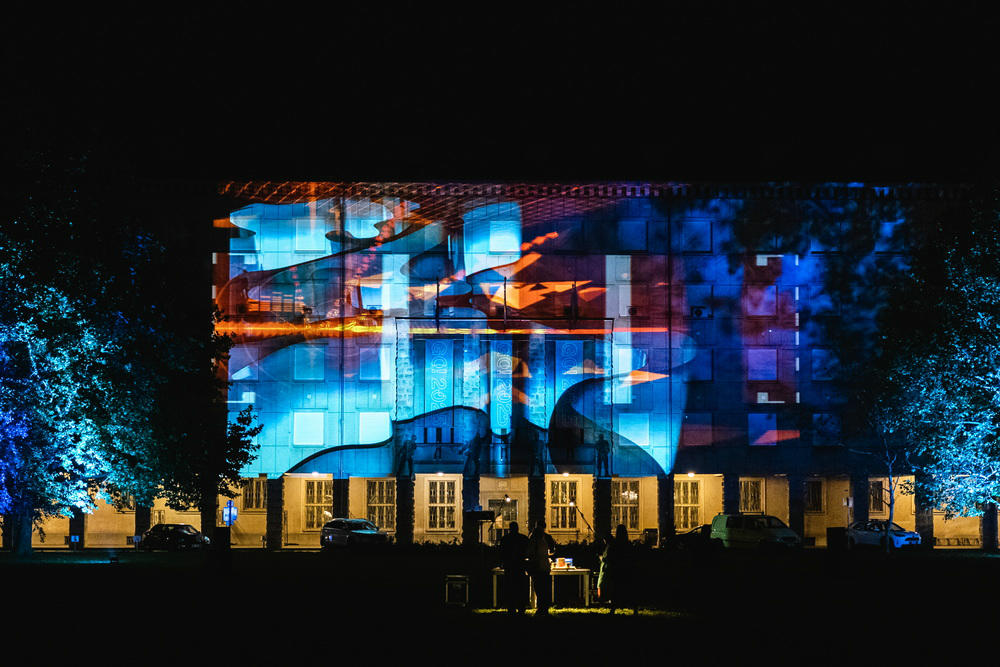
Marko Batista (1976, Ljubljana) is an intermedia artist who experiments with sound, digital video image and performs with computer generated matrixes. He’s graduated at ALUO in Ljubljana, then finished post-graduate studies at the Central Saint Martins in London. He presented his works in several intermedia festivals and exhibition spaces both home and abroad.
In discussions with internationally renowned Norwegian artist Pia MYrvoLD, a resident artist in this year’s R.o.R residency program, the conversation turned to Christine de Pizan and her famous work of prose The Book of the City of Ladies (1405), which is considered by many to be ground-breaking, as it laid the foundations for contemporary feminism. In her work, the first professional female writer of literary renown openly confronts the misogynistic views of late medieval society of her time: she uses three allegorical figures to create a fictional literary city, which houses the stories of brave and virtuous women we know from history and mythology. Although not directly related to the work of Christine de Pizan, Pia Myrvold’s work can be taken as the mental starting point for her visual expression, which draws inspiration from the past, but is forward-looking and constantly pushing the boundaries of contemporary visual art.
Pia MYrvoLD began her career as a painter in her native Norway, and after moving to Paris in the early 1990s, she gradually introduced new media of expression and disciplines into her artistic practice. She gained the public’s attention in 1992, when she put up a textile installation in the Parc de la Villette in Paris, designed by the architect Bernard Tschumi as an interplay of architecture, landscape design and social interaction: it is a space where people themselves can choose how it is used.[1] She was also involved in the Paris fashion scene for over a decade, creating a series of collections of innovative clothing – a sort of “wearable” art, combining fashion design and digital technologies. In fact, she believes that by taking an interdisciplinary approach, such as by combining art and fashion or art and architecture, she can spread her ideas in a way that is more accessible to people.[2] Reading the reviews of her work, critics also point out that she was a pioneer in the field of intermedia art and the use of computer tools in the sphere of visual arts, because, by her own account, the art world was initially reluctant to accept the combining of old and new media. She herself has used digital technologies to create innovative projects in which she combines classical media – in particular painting and printmaking, video, installation, music, performance, digital technologies and fashion design. She advocates the role of the visionary artist – a proactive force that can make a significant contribution to social change and evolution of culture and society at large.
Among her standout projects of the last decade, at the very least, one should mention the installation ART AVATAR, which she presented for the first time in 2014 at the Centre Georges Pompidou in Paris.[3] In collaboration with Parisian masters of digital art, she created an interactive virtual landscape in which visitors created their own avatars with a special app, and not only interacted directly with her artworks in a virtual mirror, but also became the performers and co-creators of the project. On the one hand, the interactive installation facilitated an immersive experience of the artist's creative world, and on the other hand it bridged the viewer's virtual experience with their own inner world. The artist believes that digital tools, which create interaction between the virtual and the physical environment, can not only augment reality, but also fully activate our imagination.
The fact that Pia MYrvoLD's art encourages reflection on the impact of technology on our understanding and experience of the world is also reflected in the smart sculptures she has been creating since 2015 in different variations in terms of form and content.[4] Naturally, these are interactive sculptures made of different materials such as electronic parts, discarded digital gadgets, electrical cables, screens, video projections and various light sources, and the common denominator they all share is that they respond to human proximity/interaction. The sensors installed along the branched structure of the installations monitor the visitors’ movements and respond to tactile input, movements and weight changes in the environment with changes in light and sound intensity based on simple Morse code.
The series of smart sculptures also includes the work #LightHackSculptures, Rivers, which she designed as part of her R.o.R. residency and is thematically related to the Soča River. The installation is a kind of agglomeration of different elements, as, in addition to a central composition in the form of vertical columns formed from laser-cut two-dimensional shapes, it also includes a three-dimensional, horizontally oriented wall sculpture and a video projection (Cube Waves, Turquoise), which is the river’s reflection. The light bodies which form part of the sculpture are also aglow in the Soča river’s characteristic color scale, which acts as the underlying theme for the entire project. The interchange of horizontal and vertical forms/elements, together with the dynamics of changing light and sound, also play an important role in illustrating the power of the river current.
The spatial installation embodies all the characteristics of the artist's artistic approach, which is based on the hybridization of different media and technologies: in fact, one can recognize the colorful and formal characteristics of her painting works in her artwork. The artwork also includes performance art, which, although ephemeral, significantly complements the message of the interactive installation. Dressed in the artist's creation, the performer wears a mask which seems to convey a certain virtual experience. But, as the artist points out, there are no virtual images in the mask, requiring the performer to imagine them themselves. Thus, the artist aims to emphasize that we are ourselves the creators of virtual content and virtual reality, and that virtuality is connected not only to art, but also to our civilization, and religion in particular, which, in the author's opinion, only becomes real as a virtual construct in our mind.
In a series of interviews, Pia MYrvoLD underlines that one of the aims of her work is to introduce a new aesthetic that is formed at the intersection between the real and the virtual, the physical and the digital. Her works offer viewers a new way of perceiving digital images and installations with integrated software/hardware. On the other hand, her projects raise issues related to ethics,[5] ecology,[6] and the circular economy, which is also the starting point of the current project #LightHackSculptures, Rivers. Her use of everyday electronics and second-hand materials is a reflection on overproduction of pointless products in consumer society. Power cables, which are a nuisance in everyday life, have the appearance of some sort of spatial drawings. According to the artist, the lighting elements which cast a myriad of shadowy figures, also carry a metaphorical meaning, as they are a projection of the human being’s destructive attitude to production, which is reflected in hyperproduction, hyperconsumption and improper waste management.
Pia MYrvoLD's art can be thought of as an innovative fusion of digital media and interactive installations, showcasing the infinite potential of contemporary technologies – but always in relation to the human being and the history of humankind. Her work offers a glimpse into a future that is uncertain for us, but which, as the artist suggests, we can have a significant role in the shaping of.
Nataša Kovšca
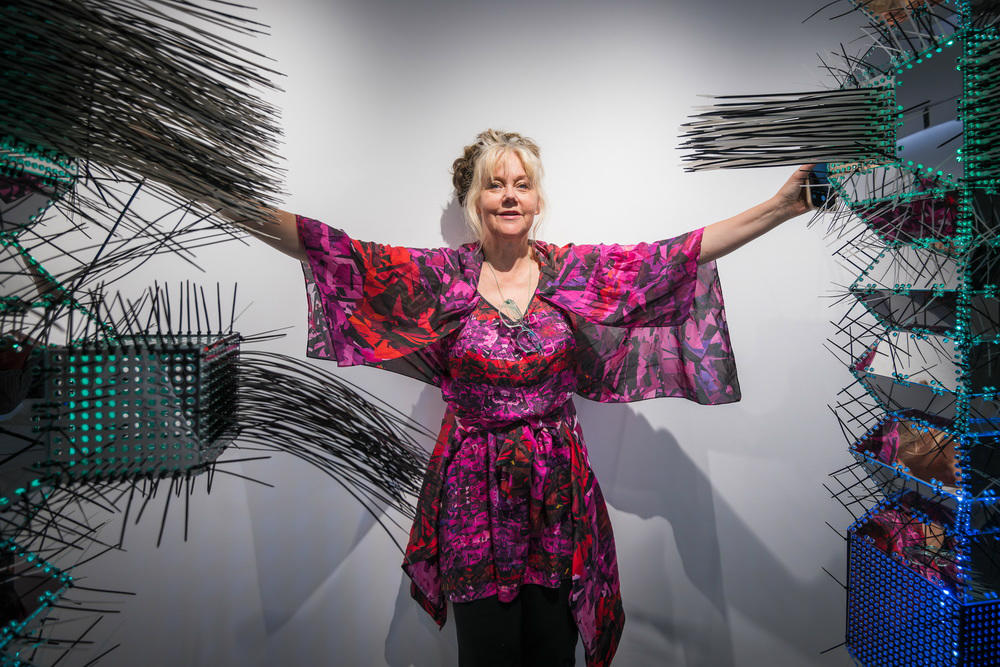
Pia MYrvoLD 's artistic journey is a testament to her creativity, innovation, and dedication to pushing boundaries. From her international debut in 1992 with a remarkable outdoor textile installation in Paris, she has achieved numerous accomplishments and recognitions in the art and design world. She has established herself as a pioneer in new media art, and her visionary approach has led to innovations such as "Clothes as Publishing" and interactive design through cybercouture.com. She has curated exhibitions, given lectures, and presented her works worldwide, with her art projects focusing on technology, human perception, and audience engagement. Pia MYrvoLD is recognized as one of the most influential Norwegian artists internationally and continues to inspire through her unique projects that reach audiences worldwide.
[1] Rather than building a traditional park which seeks to subjugate nature, Bernard Tschumi created a space for interaction. The park is a showcase example of the deconstructivist style of architecture, which theFrench philosopher Jacques Derridahelped to define.
[2] She developed the concept of “Clothes as Publishing” (1996), which she later reimagined as the project cybercouture.com. It was a sort of business model combining art and fashion, involving interactive clothing design on the website, where viewers could design their own fashion creations using the artist's own painting motifs. The project coincided with the time when some 500 sewing workshops in Paris were shut down because the textile industry was moving production to China.
[3] In 2017, she presented the follow-up project ART AVATAR 2.0 at the Science Museum Vitenfabrikken in Norway.
[4] She presented WANDS, the first generation of her smart sculptures, at Atelier Nord ANX in Oslo. These sculptures were hanging anthropomorphic shapes, which, according to the artist, refer to something otherworldly, but also to the past, as they are reminiscent of totems or magic wands.
[5] In the work Transforming Venus, for example, she explores alternatives to reproduction made possible by genetic engineering.
[6] In the context of the artist's reflections on whether art can serve the functional needs of contemporary society, it is worth mentioning the project Sun Trumpets, which she has been developing since 2016 at the invitation of the Qatar Art Museum. It is a series of kinetic sculptures integrated with power-generating solar panels.
The Nova Gorica Music School Wind Orchestra has been active over 20 years and has since changed three three conductors. For the last five years the orchestra has played under the conductor’s baton of Prof. Armando Mariutti. The orchestra plays on various occasions, such as Christmas and New Year concerts, presentations to younger generations and high schools, and various other occasions. The orchestra's program features a varied mix of music types, such as adaptations of classical works, film scores, pop and rock music, and, of course, marches. Last year was a remarkably successful year for the orchestra, having won two gold prizes in May 2023 at the Palmanova International Music Competition and the 41st Slovenian Brass Bands Competition in Krško.

Armando Mariutti has taught at various schools and also worked in the Slovenian Armed Forces Orchestra. From the very beginning, he has been intensively involved in teaching flute and chamber music. His students have won top prizes at national and international competitions, both as soloists and chamber musicians.
He has been leading the Nova Gorica Music School Wind Orchestra since 2019. In 2021, he took over the Salonit Anhovo Wind Orchestra.
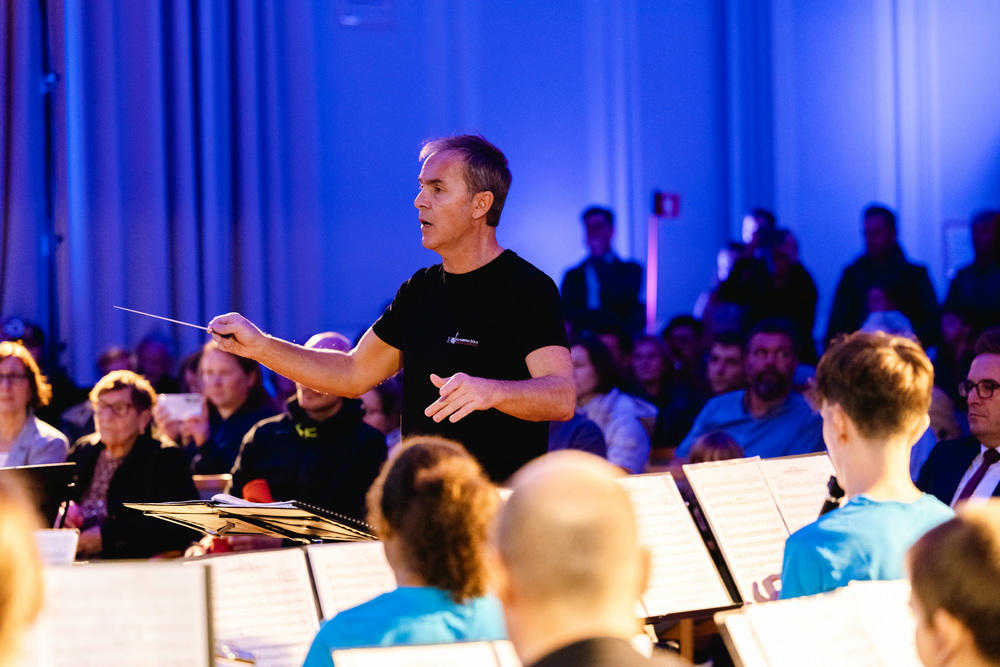
Multimedia research, 2024
In their multimedia research Rastišče endeavor, Tis Aly, Tatiana Kocmur, Liza Šimenc, Urša Rahne, and Eva Mulej undertake an exploration of the intricate features within the fungal microcosm. Their inquiry is focused on Movement, connecting processes of growth and life underground.
Mycelium designs a world without apparent rules – a realm of its own. It is a presence that endures and thrives over time, independent of human intervention. Their research aims to delve into the intricacies of the mycelial network to contemplate social connections that are non-hierarchical in nature. The authors believe that the structure of fungi and mycelial dynamics can be directly applied to interpersonal relationships and the creative process itself. Through introspection, they seek to harmonize their existence with that of Mycelium’s.
The designated growth area is envisaged as a communal nexus, inviting all participants to partake in the immersive experience—a fertile ground for creative expression and engagement. We acknowledge the symbiotic interplay between authors and audience, viewing it as a mechanism for fostering community cohesion through the dissemination of knowledge and the cultivation of an environment conducive to coexistence and co-creation within the city.
Rastišče is envisioned as a space of discovery of unrehearsed Movements—a manifestation of flourishing environments translated into choreography, visuals, and auditory stimuli.
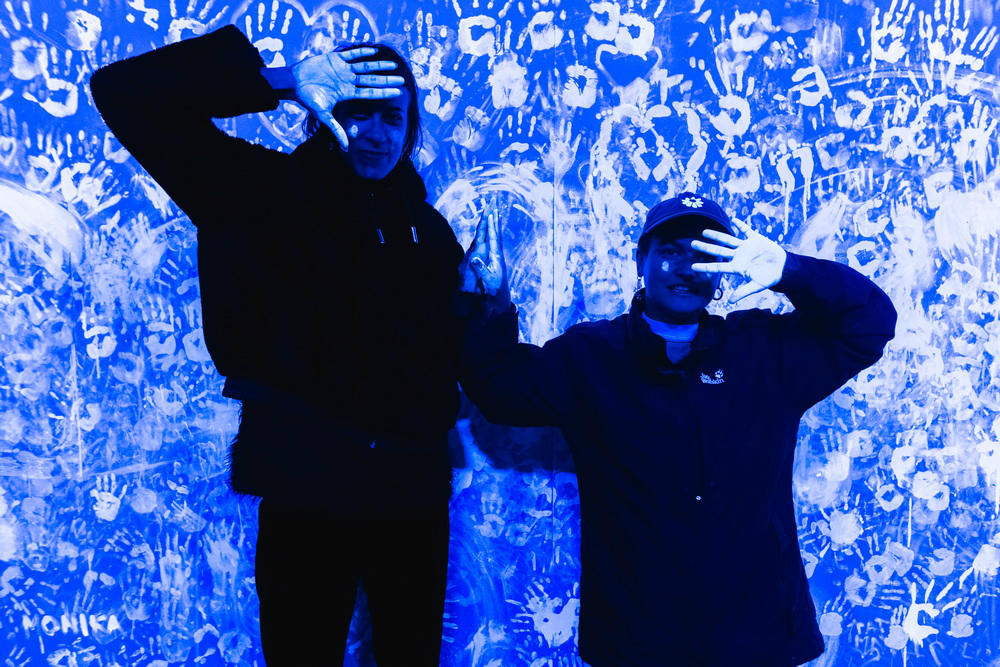
Tis Aly – BIPOC QUEER, based in Berlin since 2012, is a Brazilian performer working in the fields of art and education. He performs, produces, and collaborates in artist collectives and international productions, creating films, theater, and dance performances. He deepens his work through artistic residencies and international projects from South Korea to Brazil. His solo performances have been staged at international dance and performance festivals: Acts of Living, Festspielhaus, Hellerau BIO, Urban Praxis of Care, Draussen Stadt, Queering the Crip 2022, Spider Festival 2020/2021. Plataforma-Festival Ibero Americano, Month of Performance 2019, Loft Theater - Leipzig 2019, Berliner Festspiele 2018, HAU 2018, Sophiensäle 2022, Alumni Fondazione Pistoletto. He was educated at Centro em Movimento - Lisbon, FIA - "Integrative Artistic Formation". He was in artistic residency / BAK - Utrecht. He trained at Proscenium Performing Institutions - 2019, UBIK – Crossing Movement Lab, Minerva - Academy of Arts (NL), movement courses: Heile Haus (Berlin).
Tatiana Kocmur (1992) lives and works in Ljubljana. In 2015, she graduated in painting from the Academy of Fine Arts and Design in Ljubljana. In 2020, she completed her postgraduate studies in painting with a master's thesis Bodily Installation - Between Performance and Object. Since 2013, she has exhibited and performed at various venues in Slovenia and abroad (Skopje, Milan, Bologna, Berlin, Romania). She works as a producer of contemporary art (Circulation 2, co-initiator of the TRANSLACIJA/TRASLACIÓN platform). Her artistic practice transitions between painting and live art and is marked by collaborations with artists from different fields, creating events that involve the body of the artists. Since 2018, she has been working in tandem with Liza Šimenc as Kresnička. In 2021, she received a work scholarship from the Ministry of Culture of the Republic of Slovenia. In 2022, she participated in the 5th Triennial of Young Artists at the Gallery of Contemporary Art Celje. Her video works are included in the DIVA archive (SCCA).
Eva Mulej is a vocalist, musician, producer, and sound artist. Her original work intersects electro-acoustic, ambient, and experimental music. From 2018 to 2022, she was also active in street theater, where she was most interested in the connection between movement and sound. In recent years, she has been most active in the ambient-experimental duo Lip Rouge, which she forms together with sound artist Karmen Ponikvar, and the project Čaralice Zvezdane Novakovič. She creates and performs solo under the artistic name Oka. She also collaborates with musician and producer Tine Vrabič, with whom she first presented a joint project at the Rdeče Zore festival in 2023. She has released works under the labels Ambientsoup (Lip Rouge: EP Tundar, 2022), Kamizdat (Lip Rouge: Ply/Colony, 2022) Senzorama ZARŠ (Lip Rouge: Sakura, 2021) and self-publishing Zvezdane Novakovič (Čaralice, 2023) and performed at festivals such as Ment, Druga godba, Keltika, Imago Sloveniae, Sajeta, Rdeče zore, Reciklart In Memoriam prof. Peter Hafner, Niansa and Sounded. As part of the duo Lip Rouge, she also collaborated in creating sound for the experimental short film by Uroš Marolt The Gravity of the Boltzmann’s Brain.
Urša Rahne is a multimedia artist based in Ljubljana. She creates in the fields of photography, film and video, graphic design, and performance. Between 2016 and 2018, she lived in Belgrade, where she attended film directing studies at the Academy of Arts in Belgrade. Her works intertwine many themes, characterized by social sensitivity and humor towards the contemporary political and social system. So far, she has had three solo exhibitions at the cultural center Garaža (2017 Belgrade, RS), gallery Dobra Vaga (2021), gallery Pešak (2021), gallery Alkatraz (2022), Galerija Fotografija (2023), and group exhibitions at Dorćol Platz (Belgrade, RS) and gallery Dobra Vaga. She participated in the festival Svetloba Gverila (2019, 2021, 2023) and with the collective Podmladek at the Indigo festival (2021, 2022). Her films have been screened at Cultural Home Karlovac (CRO), Youth Home (Belgrade, RS), Kino Otok Festival (Izola), Škuc Gallery. In 2019, she co-founded the collective Kvadratni Meter, addressing housing and spatial issues (Circulation 2, Alkatraz Gallery, Aksioma, Y Gallery, 35th Graphic Biennial). Her work has been published in the magazines Likovne Besede and ETC Magazine.
Liza Šimenc (1991) is an interdisciplinary artist working since 2015 at the intersection of contemporary dance and visual arts. She created her specific style extending author's costume design into scenography. She expresses herself mainly through movement and performing, spatial and light installations. She performs interventions in public spaces, performances, somatic shows, and ambient events. She received her education at the International Ballet School Bled and the Conservatory for Music and Ballet Ljubljana. She further educated herself abroad (Hong Kong, New York, London, Madrid, Brussels, Vienna, Budapest, Milan, Berlin). She is a recipient of the Ministry of Culture's work scholarship in 2016. She actively collaborates with renowned artists, is part of the artistic tandem Kresnička – with visual artist Tatiana Kocmur, a member of the group NOTA – with musicians Boštjan Simon and Elvis Homan, and creates the authorial opus ALLO with dancer Anja Mejač and musician Luka Uršič.
TERRANIGMA x BubblesFractals Live (BEAM TEAM) is an audiovisual performance combining experimental dance electronic music with live visuals. Terranigma, an established figure in the underground club scene, will present his live set, accompanied by VJ BubblesFractals. The VJ will create real-time visualizations that react to the sonic impulses of the synthesized and sequenced music, resulting in a cohesive audiovisual experience. The synchronization between sound and visuals will offer an immersive exploration of the interplay between these two artistic expressions.
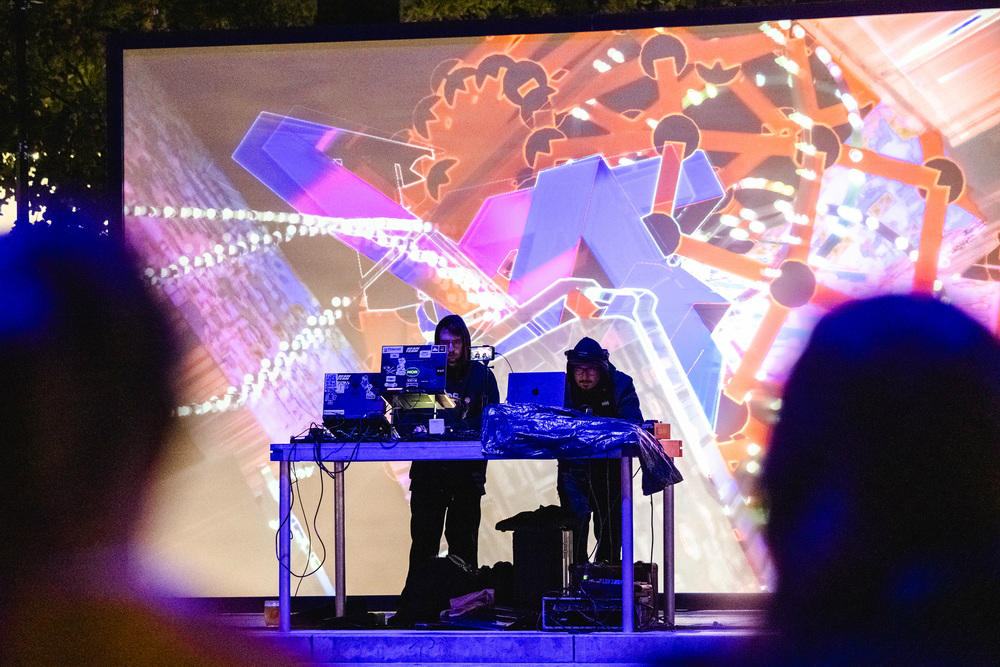
Črt Trkman (TERRANIGMA) is a music producer, sound designer, and DJ. He has been active on the local electronic music scene for over a decade, releasing music on various local labels and compilations. His recent projects include: the self-released track "Resonance Cascade" on Bandcamp (2023), two tracks for the V/A compilation by the local label DE/FRAGMENT featuring "Psi Distruptor" (2022) and "Got Donk" (2021), the Hydrozone EP (2020) released by the Slovenian netlabel Kamizdat, and another track for the same label on the VA compilation Access Frame: Monstrosity (2021).
Additionally, he has created music for various video and art installation projects within the BEAM TEAM collective, most notably for the Festival Lighting Guerrilla 2023 – Portal and Festival Lighting Guerrilla 2021 – The Grid / Mreža.
https://soundcloud.com/terranigma
https://terranigma.bandcamp.com/
https://www.instagram.com/terranigma_crt/
https://www.instagram.com/beam_team_visuals/
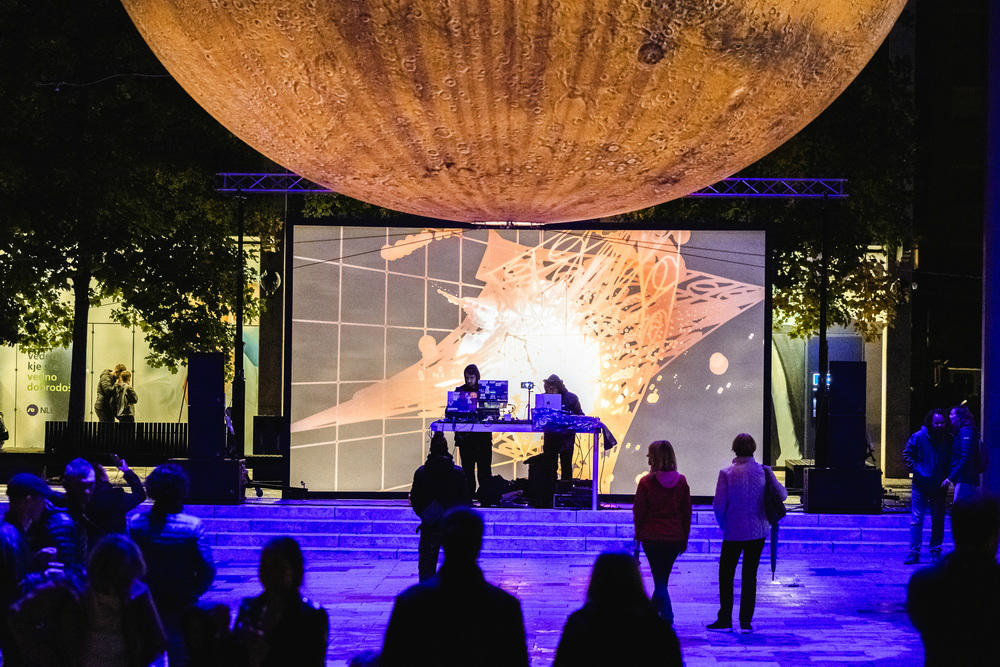
Amadej Plesničar (BubblesFractals) is a computer technician who completed studies in horticulture. His artistic journey began in 2017 as a self-taught artist, gradually refining his work across various media. His style is recognized for its cyber-solarpunk aesthetic. He deepened his exploration of generative visualizations as a resident VJ at Klub K4 and collaborating on several projects for the Svetlobna Gverila festival. The original visualizations he creates using TouchDesigner are generated in real time and are reactive to music. He is also a member of the BEAM TEAM collective.
https://www.instagram.com/bubblesfractals/
https://www.instagram.com/beam_team_visuals/










The project is co-financed by the public institute GO! 2025 – European Capital of Culture, Nova Gorica.